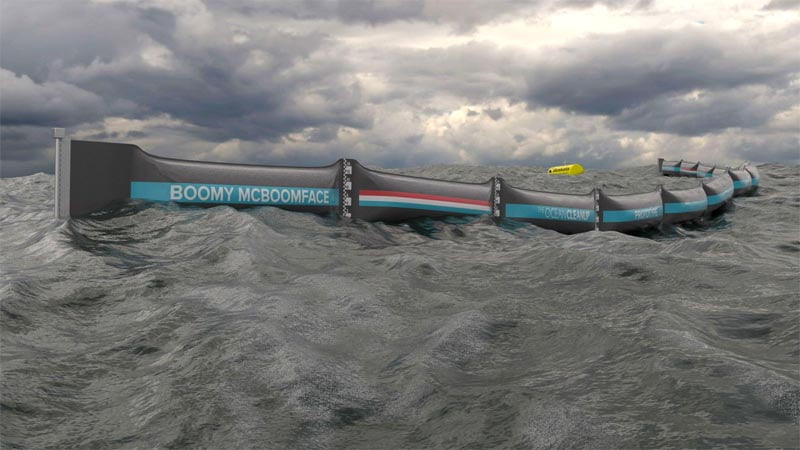The Ocean Cleanup, the Dutch foundation developing technologies to rid the oceans of plastic, has unveiled its North Sea prototype. The prototype will become the first ocean cleanup system ever tested at sea.
The prototype will be installed in the North Sea, 12 nautical miles off the Dutch coast, where it will remain for one year. The objective is to test how The Ocean Cleanup’s floating barrier fares in extreme weather at sea – the kind of conditions the system will eventually face when deployed in the Great Pacific Garbage Patch.
The 100 meter-long barrier segment deployed in the North Sea will help validate the survivability of the system. Sensors will track every motion of the prototype and the loads it is subjected to. The data gathered will enable engineers to develop a system fully resistant to severe conditions during the cleanup of the Great Pacific Garbage Patch. At the North Sea test site, conditions during a minor storm are more severe than those in exceptionally heavy storms (occurring once every 100 years) in the Pacific Ocean.
The Ocean Cleanup’s cleaning technology makes use of long floating barriers which act as an artificial coastline, passively catching and concentrating ocean debris. The system is powered by the ocean’s natural currents. Testing the barriers is important because of their crucial role in the cleanup concept. Although some trash may be caught during the North Sea prototype test, collecting plastic is not its objective.
Boyan Slat, CEO and founder of The Ocean Cleanup, said “I estimate there is a 30 percent chance the system will break, but either way it will be a good test.”
By 2020, The Ocean Cleanup aims to deploy a 100 km-long structure between Hawaii and California. Analysis suggests this array will be able to clean up about half the Great Pacific Garbage Patch in ten years’ time.
Two of The Ocean Cleanup’s main partners are the Dutch government and dredging and marine contractor Royal Boskalis Westminster.
Source: maritime-executive.com

